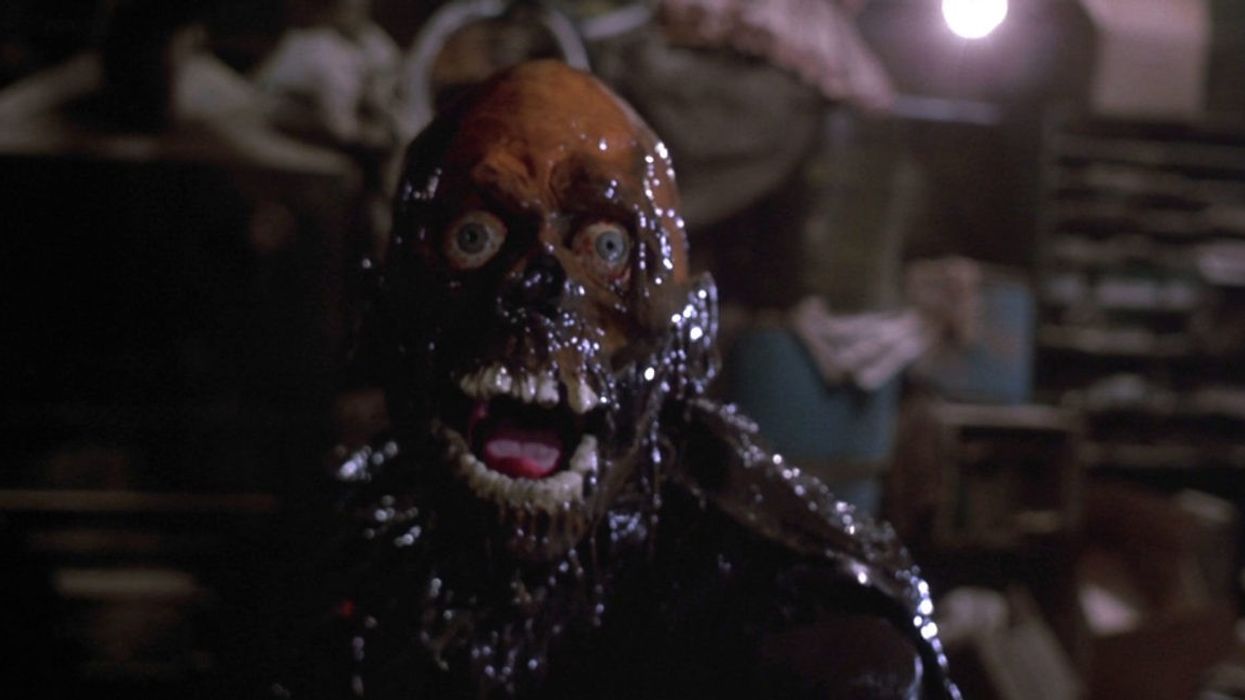How to Use the Uncanny Valley in Horror
This is how you make something almost unrecognizable.

There is nothing worse than seeing a modern movie monster revealed in a film or TV show that isn't as scary as you thought it would be. In fact, the creature kind of looks familiar, and the fear and suspense that has been building throughout the runtime is dead. How do you avoid this lack of fear of a movie monster?
The human mind is a wonderful and strange thing. We can create something far more terrifying in our heads than what is on screen.
However, there is one dark corner of our brain that cannot comprehend creatures or characters that look almost human but not quite. No matter how long we look at these unnatural creatures or characters, the signals in our brains light up and tell us to fight or run away. That is the power of the "uncanny valley."
How do you use the uncanny valley to scare your audience? Let's break it down.

What Is the Uncanny Valley?
Japanese roboticist Mashiro Mori first identified the uncanny valley in the 1970s. Sigmund Freud did touch on the concept in 1919 by using the example of a character in a story whose humanity is left ambiguous, but Mori gave that concept a face that would be explored through media and digital art.
The uncanny valley is a concept that deals with the perception of not-quite-human entities by humans. It’s mapped on a graph of human likeness and familiarity. The uncanny valley falls near human likeness, but feels very unfamiliar.

There are multiple explanations for something becoming disturbing to the human eye, but evolutionary biologists argue that it is a result of the brain’s built-in desire to avoid bacteria, viruses, or other microorganisms that cause diseases.
The Fear of the Almost Human
I mentioned earlier that zombies are difficult for us to recognize as non-human because of the uncanny valley. Sure, they were once human, but something about them is different and unnerving. This immediately generates fear and fascination with the walking dead.
Zombies have plagued pop culture, so our brains have come to understand what they are when we see them. Still, the psychological response to their appearance is the same.
Small imperfections trigger our fight or flight response, which is why a CGI character that almost looks human can be deeply disturbing.
Some examples of CGI characters falling into the uncanny valley included Renesmee Cullen from Twilight Breaking Dawn: Part 2, the first attempt at Sonic in Sonic the Hedgehog, She-Hulk from She-Hulk, and every character from The Polar Express andCats.

These mistakes were understandable because the team simply overshot the mark of likeability when trying to create human characters. Our brain can't figure out what we are looking at if there are too many human elements given to an anthropomorphized creature.
It can be a tricky line to walk, but you can use this tool to create a terrifying creature once you understand how to work around the uncanny valley.
How to Use the Uncanny Valley
There are a variety of filmmakers who use tricks to evoke the uncanny valley. The best use of the uncanny valley in the film involves turning a human performer into a non-human creature by using complex camera techniques or CGI.
Mullholland Driveand Jacob’s Ladder dip into the uncanny valley by having actors perform actions slowly, then speed up the footage to create an off-putting effect. A similar effect was used in The Ring when Sadako emerges from her infamous well in the TV.
Many of the killers from the slasher movies of the 70s and 80s also fall into the uncanny valley due to their appearances and mannerisms. In Halloween, Michael Myers is a human that is dehumanized by the mask he wears. The bleached William Shanter mask strips away any expression or human-like warmth that we associate with humanity. The unnaturalness fractures our ability to categorize what we are looking at, so we can only respond by fearing its "otherness."

The most common use of the uncanny valley that never fails to unnerve an audience is when the humanity of a being is uncertain or up for debate. The best example would be Ava (Alicia Vikander) from Ex Machina. The detailed costume and dialogue show that the robot is artificial, but every other aspect of her is human-like.
According to Scream Horror Magazine, these are a few qualities to keep in mind when creating a character that dips into the uncanny valley:
- Lack of identity
- A reminder of death
- Immune to disease
- Have a lack of modern rules or morals
These few qualities can make a character come to life in your story as a beautiful eyesore that motivates the plot. How they do that is completely up to you.
The uncanny valley can be a disastrous tool for some and a tool of genius for others. It’s a unique psychological phenomenon that has become a crucial part of modern storytelling.
What makes something human? What makes something lack that thing that makes us human? It is a question that will forever be explored in storytelling, and the visuals will be there to haunt us.
What is your favorite example of the uncanny valley in film or TV? Let us know in the comments below!
Source: Scream Horror Magazine


 "'Back Home"via Mercedes Arutro
"'Back Home"via Mercedes Arutro 'Back Home'via Mercedes Arutro
'Back Home'via Mercedes Arutro 









